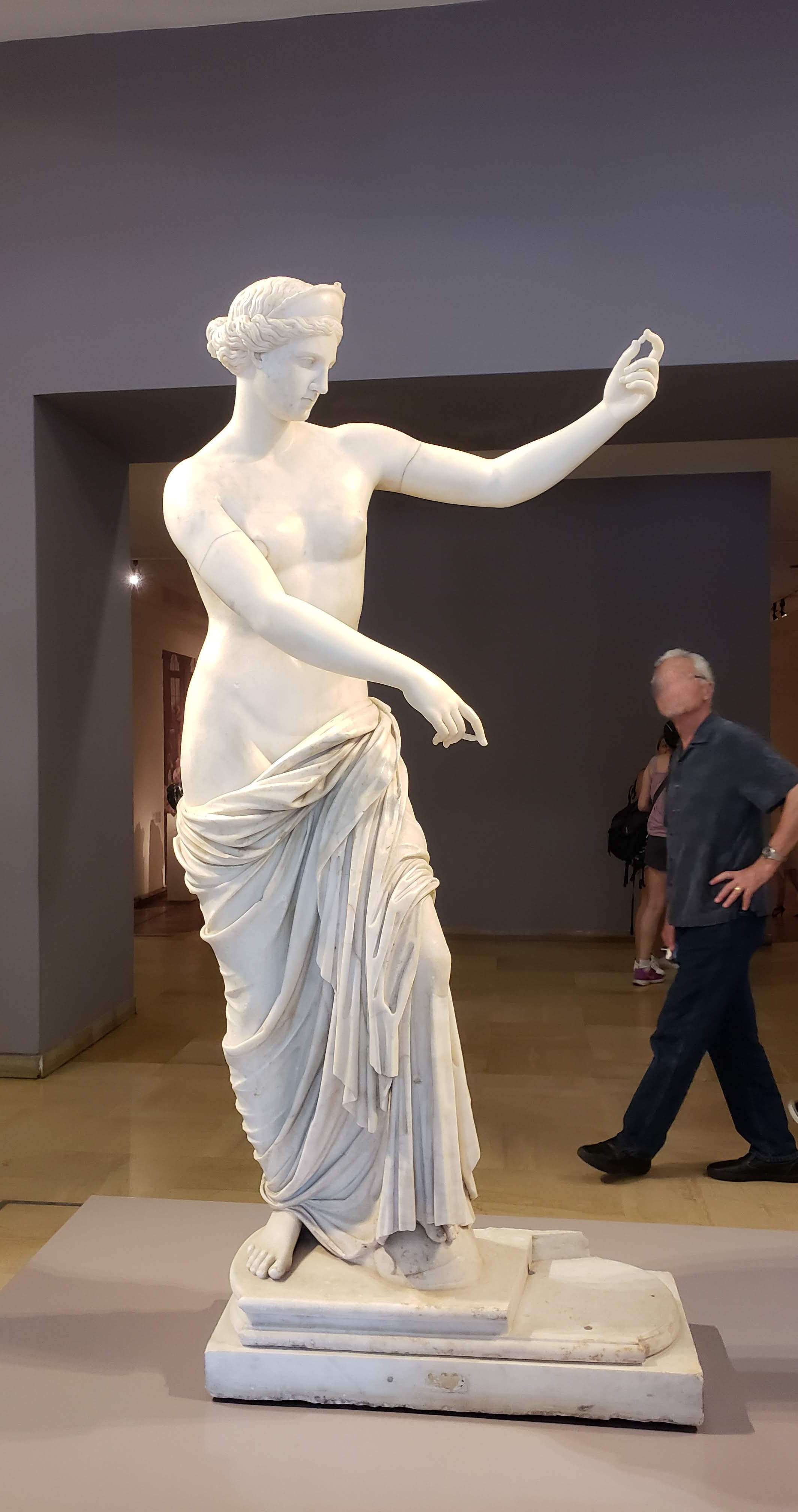Capuan Venus on:
[Wikipedia]
[Google]
[Amazon]
 The Venus of Capua is a sculpture made during the empire of
The Venus of Capua is a sculpture made during the empire of
Capuan Venus and the Ancient Capua treasuries
Venus de Milo Capua (ancient city) Collections of the National Archaeological Museum, Naples Archaeological discoveries in Italy {{Italy-sculpture-stub
 The Venus of Capua is a sculpture made during the empire of
The Venus of Capua is a sculpture made during the empire of Hadrian
Hadrian (; la, Caesar Trâiānus Hadriānus ; 24 January 76 – 10 July 138) was Roman emperor from 117 to 138. He was born in Italica (close to modern Santiponce in Spain), a Roman ''municipium'' founded by Italic settlers in Hispania B ...
(117 to 138 AD). It is presumed that the Venuses of Milo and Capua are copies of an original lost Aphrodite, attributed to Lysippus, one of the great sculptors of classical Greece.
Standing on her right leg, with her left foot resting on a helmet, the Greek goddess Aphrodite (Venus, according to Roman mythology) is represented half-naked. A himation or mantle of rich draping covers the lower part of the body, supported by the knee of the left leg slightly bent, and highlights the slight twist of the bust. The hair is divided on the forehead and gathered at the nape, which adorns a headband whose edge was possibly decorated with a string of pearls. On the face, oval in shape, there are almond-shaped eyes and well-drawn lips. The upper part of the body and the head of Aphrodite turn slightly to the left, while the arms rise to hold, almost certainly, the shield of the warrior god Ares, where the goddess looks at herself as if it were a mirror. In this figure, the harmonic composition of the contrapposto adapts to a female body.
Artistic context
The myth represented has been the subject of various interpretations throughout history. It has been proposed that this figure is related to the Roman myth of the victory of Venus over Mars, an allegory of the triumph of love over war. This iconography is reflected in testimonies of the same period, both literary (the '' Argonautica'', by Apollonius of Rhodes) and pictorial. There are numerous iconographic representations present in Pompeian paintings. This reading can also be linked to the worship of Venus Vincitrix in Capua, afterJulius Caesar
Gaius Julius Caesar (; ; 12 July 100 BC – 15 March 44 BC), was a Roman general and statesman. A member of the First Triumvirate, Caesar led the Roman armies in the Gallic Wars before defeating his political rival Pompey in a civil war, and ...
turned it into a veteran colony, in AD 59, and chose her as the city's protective deity.
This version of Aphrodite was found in 1750 at the Amphitheatre of Capua
The Amphitheatre of Capua was a Roman amphitheatre in the city of Capua (modern Santa Maria Capua Vetere), second only to the Colosseum in size and probably the model for it. It may have been the first amphitheatre to be built by the Romans.
an ...
in Capua, where it was part of the architectural decoration. In 1820, the drapery, arms and nose were restored. Made in marble, the piece is dated to the Hadrianic
Hadrian (; la, Caesar Trâiānus Hadriānus ; 24 January 76 – 10 July 138) was Roman emperor from 117 to 138. He was born in Italica (close to modern Santiponce in Spain), a Roman ''municipium'' founded by Italic settlers in Hispania B ...
period and derives from a Greek original in bronze
Bronze is an alloy consisting primarily of copper, commonly with about 12–12.5% tin and often with the addition of other metals (including aluminium, manganese, nickel, or zinc) and sometimes non-metals, such as phosphorus, or metalloids such ...
at the end of the 4th century BC.
It is permanently exhibited in the Napoli Archeological Museum in Italy.
It also was temporarily exhibited in the Museo Nacional de Bellas Artes in Buenos Aires from November 15th 2018 until February 17th 2019 as part of the cultural relations and exchanges between the Italian and Argentine States, took place in the context of the G-20 Summit hosted by Argentinian Government in Buenos Aires City,
Bibliography
* C.M. Havelock, ''The Aphrodite of Knidos and Her Successors: A Historical Review of the Female Nude in Greek Art'', University of Michigan Press, 2008.External links
Capuan Venus and the Ancient Capua treasuries
Venus de Milo Capua (ancient city) Collections of the National Archaeological Museum, Naples Archaeological discoveries in Italy {{Italy-sculpture-stub